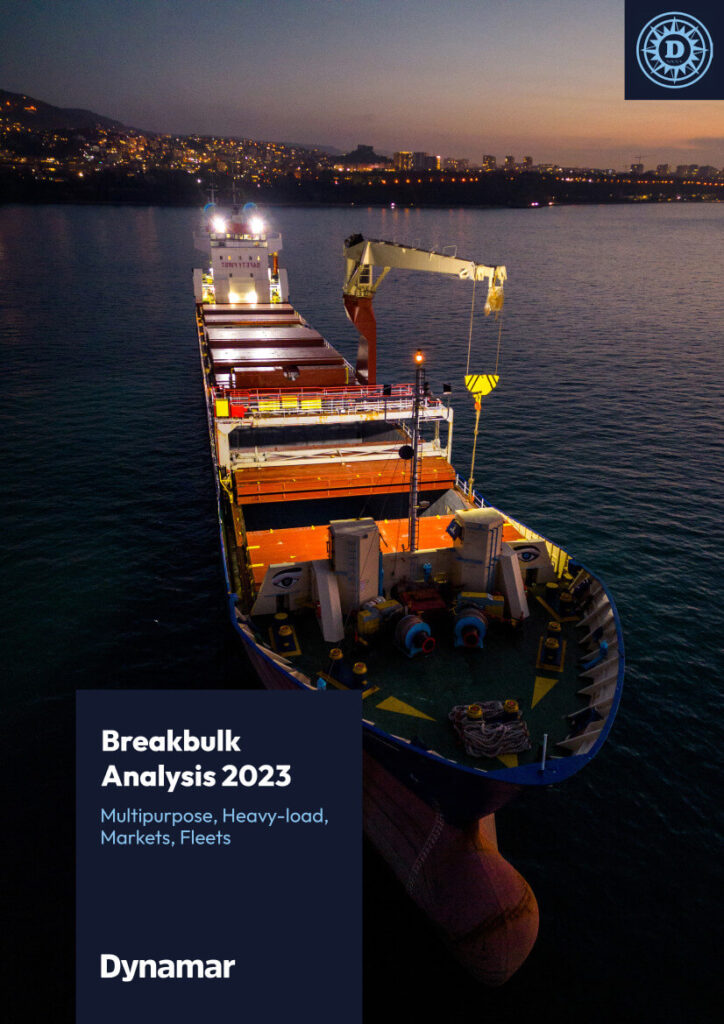Dynamar’s Breakbulk Analysis
The latest edition of Dynamar’s ‘Breakbulk Analysis’ builds on the previous success of Breakbulk V (2019), offering industry stakeholders an enhanced, data-driven and restructured analysis of the breakbulk industry. This comprehensive report examines the current and future outlook of the industry, providing key insights into major operators in breakbulk, RoRo, project, and heavy-lift shipping. It also details their fleet capabilities and orderbooks, alongside an in-depth reviewof global trade of major breakbulk cargoes.
What is breakbulk?
Breakbulk is a broad term used to describe any dry cargo that does not fit into the standardised form of the rectangular box. Whilst there are striking examples of remarkable heavy-load and semi-submersible vessels transporting incredibly colossal cargoes, this only represents a small portion of breakbulk operations. The majority of breakbulk cargo includes industrial components, plant, machinery, cranes, wind-turbines, forest products, aluminium rolls, iron and steel, agribulks, and minerals. Our publication identifies the major breakbulk cargo categories, importers and exporters, defines the main trading areas, and lists the commodities generated in each area.
Key statistics
Dynamar’s Breakbulk publication uses the most recent trade statistics across key breakbulk commodities, complemented by the latest statistics on port, vessel and carrier fleets. It delivers a profound insight into the background, characteristics, goings and present status of the worldwide breakbulk shipping market, and its most prominent players. Our publication provides a wealth of merchandise trade data, fleet overviews, and rankings of carriers operating ships that carry breakbulk, project, and heavy lift cargoes. Roughly, those ships can be split into two segments: multipurpose and heavy-load.
The competition
Finally, closing this publication is an overview of the ‘disruptors’, the other shipping sectors that also compete for breakbulk cargoes. These are vehicle carriers, containerships and conventional reefer vessels. Their involvement within breakbulk markets are summarised, along with capacity tables and operator profiles – providing an extensive overview.
Content
- Detailed analysis of breakbulk cargo categories and major trade areas
- Up-to-date statistics on port, vessel, and carrier fleets
- Insight into market disruptors, including vehicle carriers and containerships
- Essential reading for professionals involved in breakbulk and heavy lift logistics
